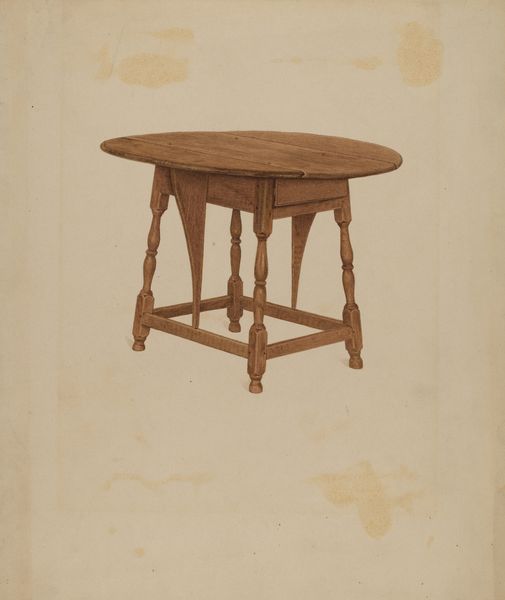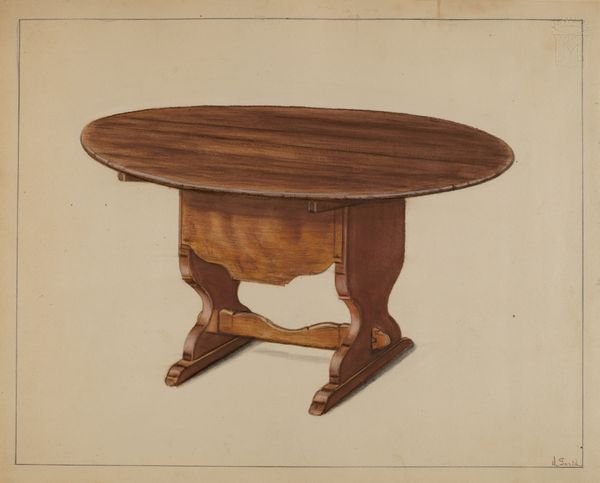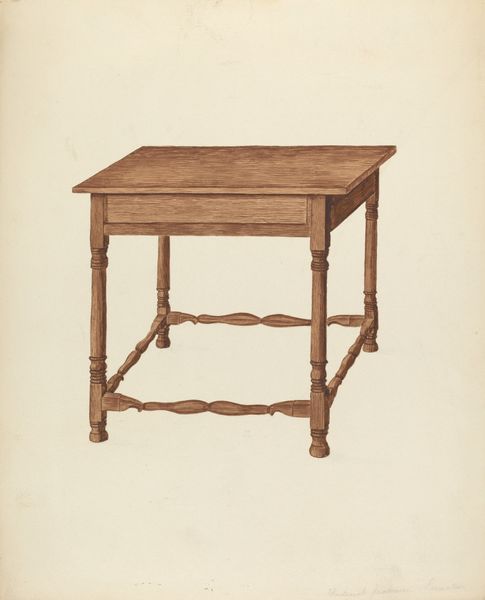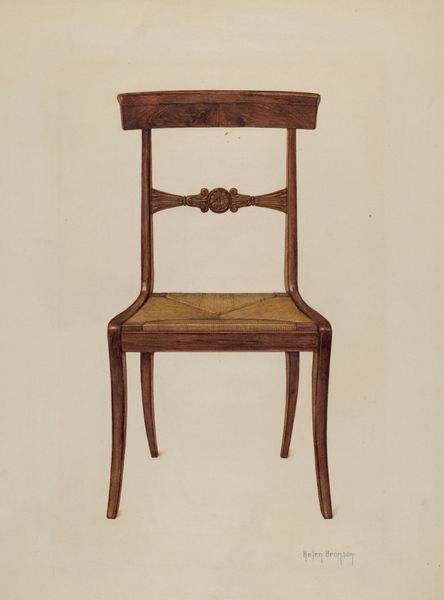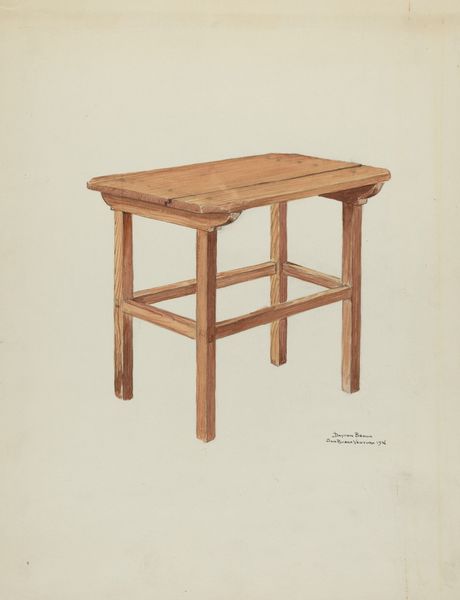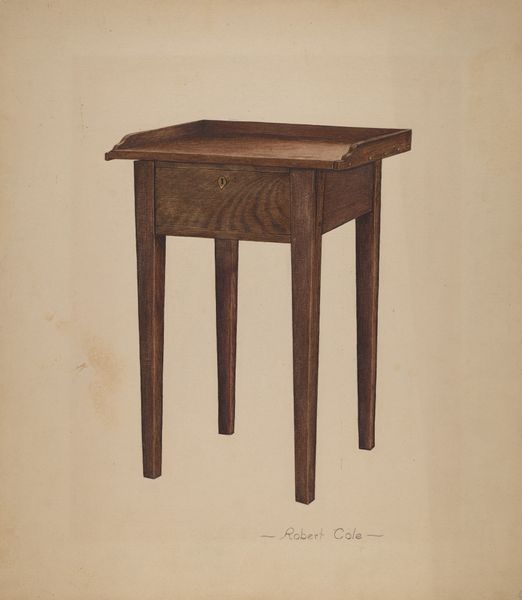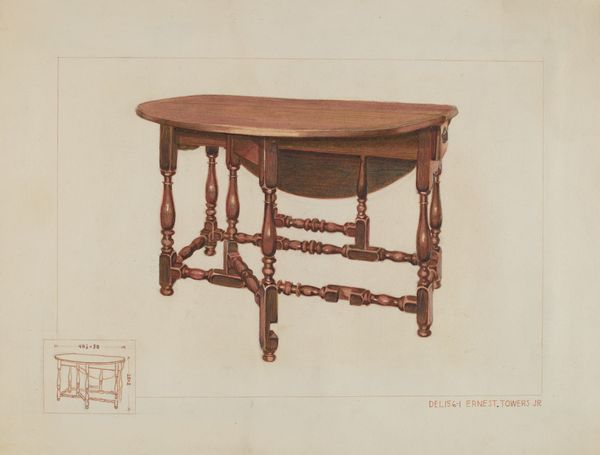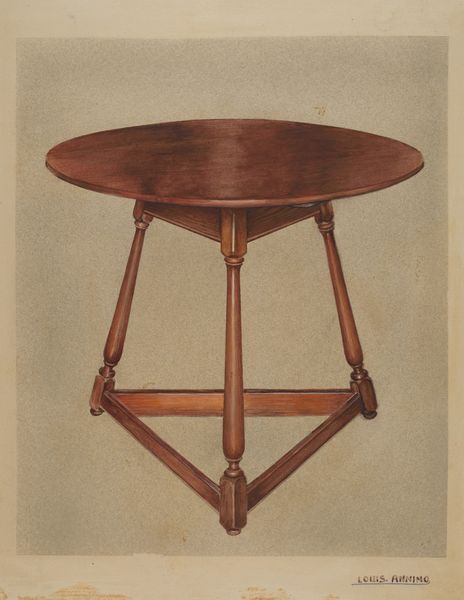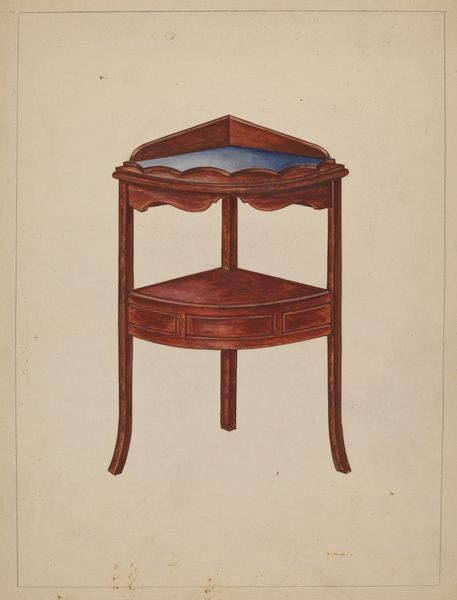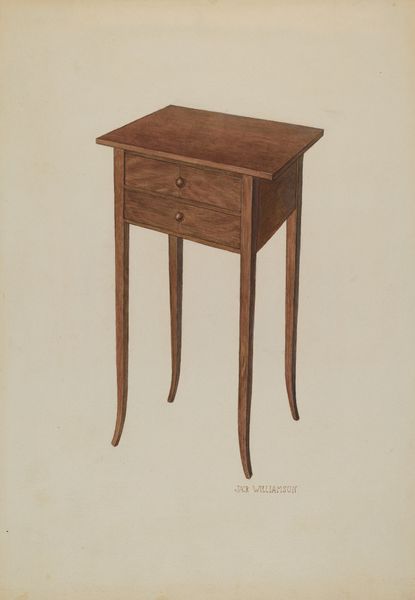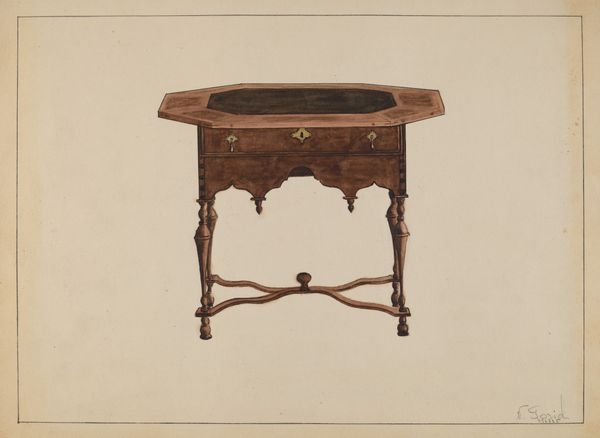
drawing
#
drawing
#
charcoal drawing
#
oil painting
#
watercolour illustration
#
academic-art
#
watercolor
Dimensions: overall: 29.8 x 22.8 cm (11 3/4 x 9 in.)
Copyright: National Gallery of Art: CC0 1.0
Curator: So, here we have Charles Squires's "Butterfly Table," a watercolor from around 1940. It's quite charming, isn't it? Something about its ordinariness is striking. What are your first thoughts? Editor: It is indeed quite charming. It feels…domestic, almost nostalgic. The table itself, rendered so meticulously in watercolor, looks quite solid, and yet the medium gives it a delicate air. What do you see in this piece? Curator: I see a quiet resistance. This was made during a period of immense global upheaval, as war spread in Europe. This hyper-realistic depiction of a humble table serves as a deliberate, if subtle, act. Squires seems to be claiming space for the quotidian, imbuing it with value when the world outside felt overwhelmingly destructive. How do you read its realism, particularly given the context of its creation? Editor: That’s a very interesting point. I suppose the focus on such a simple object could be seen as a deliberate turning away from the horrors of the time, finding solace in the ordinary. Almost like a form of preservation? Curator: Exactly! It’s about preservation, yes, but also about centering a specific class identity rooted in the domestic sphere. Who gets to retreat to the comfort of their homes and claim that as their reality, and who is denied that sanctuary? We need to acknowledge who can find peace in domesticity during wartime and whose homes are threatened, or nonexistent. Does seeing it that way change your perspective? Editor: Absolutely, it complicates it in a necessary way. I was initially drawn in by its quiet simplicity, but now I see there are complex issues of privilege and perspective embedded within that simplicity. Curator: Precisely. The seemingly innocuous image becomes a site of socio-political engagement, inviting us to consider whose stories are being told and whose are being overlooked. Editor: It really highlights the importance of considering the historical and social context when we look at art. Thank you! Curator: And thank you! It’s by having these conversations that we can bring nuance to the study and experience of art, in all its many forms.
Comments
No comments
Be the first to comment and join the conversation on the ultimate creative platform.
